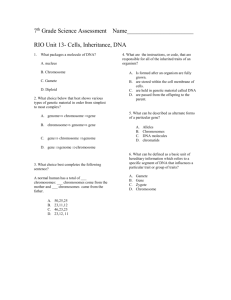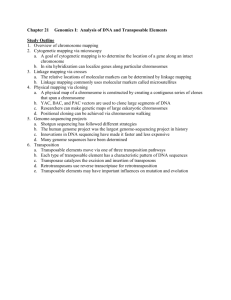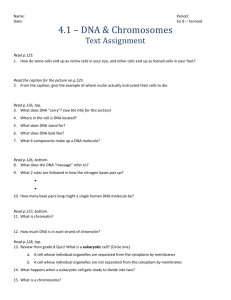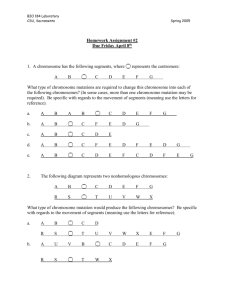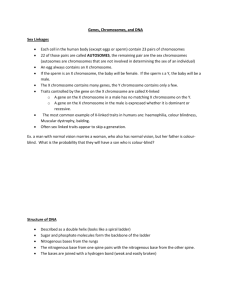Biology-Chapter-14-Vocabulary
advertisement
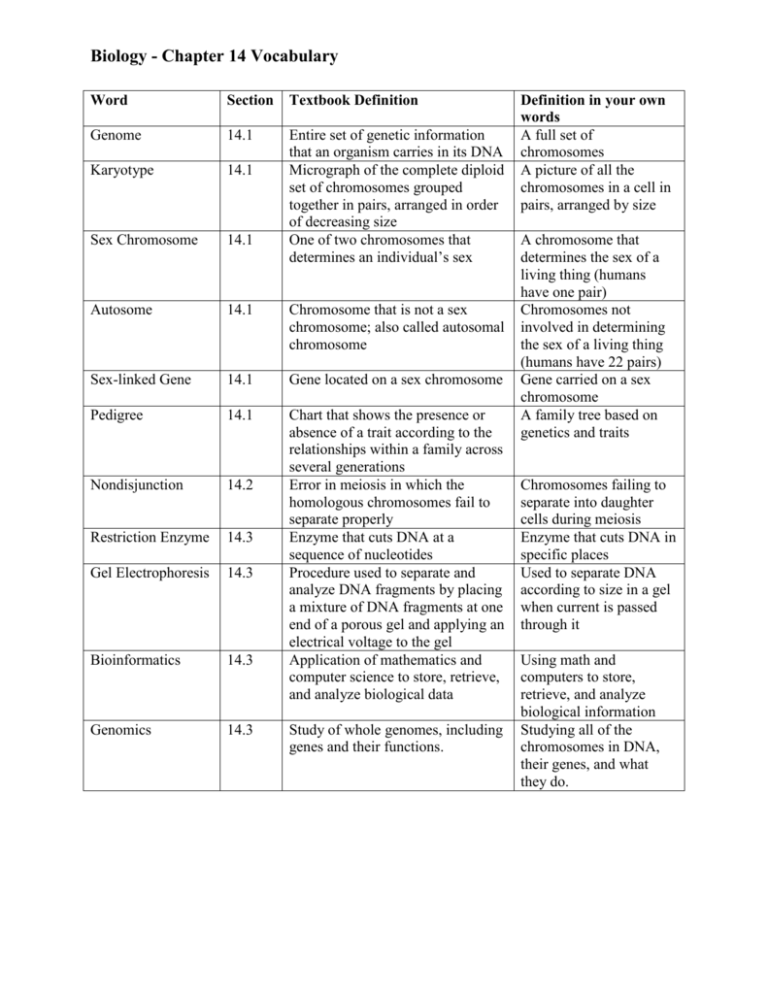
Biology - Chapter 14 Vocabulary Word Section Textbook Definition Genome 14.1 Karyotype 14.1 Sex Chromosome 14.1 Entire set of genetic information that an organism carries in its DNA Micrograph of the complete diploid set of chromosomes grouped together in pairs, arranged in order of decreasing size One of two chromosomes that determines an individual’s sex Autosome 14.1 Chromosome that is not a sex chromosome; also called autosomal chromosome Sex-linked Gene 14.1 Gene located on a sex chromosome Pedigree 14.1 Nondisjunction 14.2 Restriction Enzyme 14.3 Gel Electrophoresis 14.3 Bioinformatics 14.3 Chart that shows the presence or absence of a trait according to the relationships within a family across several generations Error in meiosis in which the homologous chromosomes fail to separate properly Enzyme that cuts DNA at a sequence of nucleotides Procedure used to separate and analyze DNA fragments by placing a mixture of DNA fragments at one end of a porous gel and applying an electrical voltage to the gel Application of mathematics and computer science to store, retrieve, and analyze biological data Genomics 14.3 Study of whole genomes, including genes and their functions. Definition in your own words A full set of chromosomes A picture of all the chromosomes in a cell in pairs, arranged by size A chromosome that determines the sex of a living thing (humans have one pair) Chromosomes not involved in determining the sex of a living thing (humans have 22 pairs) Gene carried on a sex chromosome A family tree based on genetics and traits Chromosomes failing to separate into daughter cells during meiosis Enzyme that cuts DNA in specific places Used to separate DNA according to size in a gel when current is passed through it Using math and computers to store, retrieve, and analyze biological information Studying all of the chromosomes in DNA, their genes, and what they do.




